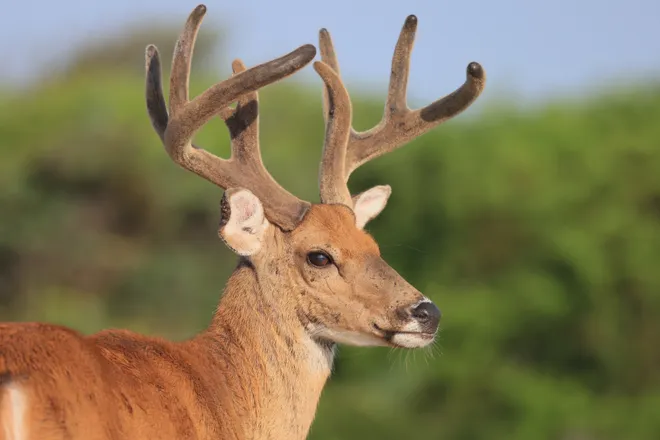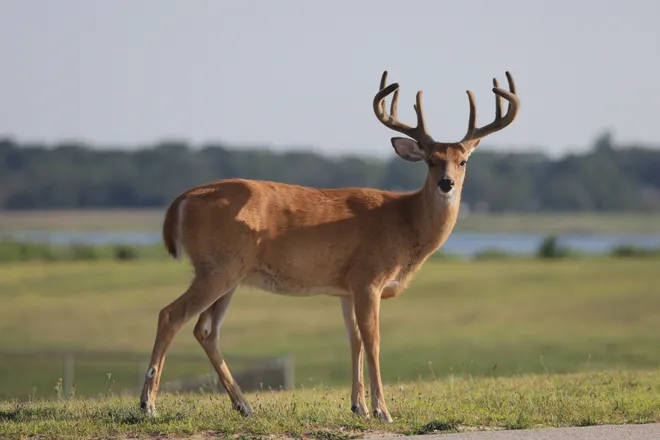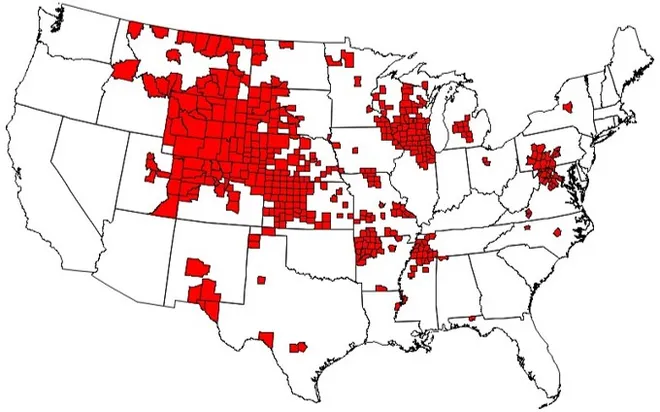'Zombie deer' disease has been reported in more than half the US: What to know about CWD
More than half of states have identified cases of chronic wasting disease, sometimes called "zombie deer disease," a fatal neurologic disease among animals.
Kentucky became the latest state to confirm a case of CWD when officials with the state Department of Fish and Wildlife announced Thursday that the disease was detected in a 2-year-old white-tailed deer harvested by a hunter in November. Chronic wasting disease has been also detected in Canada and in some Nordic European countries.
The disease mainly affects free-ranging deer, elk and moose, according to the Centers for Disease Control and Prevention.
Here's what you should know about chronic wasting disease and why some people call it "zombie deer disease."

What is chronic wasting disease or 'zombie deer disease'?
According to the CDC, chronic wasting disease is a progressive, fatal disease that affects the brain, spinal cord and other tissues of both farmed and free-ranging deer, elk and moose. It does not appear to naturally infect cattle or other domesticated animals.
The disease was first discovered in Colorado in 1967, according to the U.S. Geological Survey, and has since spread to a number of states and to countries around the world. No infections have been reported in humans, although research suggests the disease is more transmissible to humans from animals than was previously thought.
It can have an incubation period of over a year, and signs of the disease may develop slowly. Scientists believe the disease spreads through contact with contaminated body fluids and tissue, or through the environment, including drinking water and food, the CDC says.
Why is chronic wasting disease called 'zombie deer disease'?
Chronic wasting disease is sometimes referred to as "zombie deer disease" or affected deer can be called "zombie deer" due to the neurological signs of the disease, which include weight loss, lack of coordination, listlessness and drooling.
The infection is believed to cause damage to normal prion proteins found in tissues throughout the animal's body, the CDC says, but most often in the brain and spinal cord, which can lead to brain damage and the development of other prion diseases.
According to Johns Hopkins Medicine, a prion is a type of protein that can "trigger normal proteins in the brain to fold abnormally." In mammals, prion diseases are transmissible, untreatable and fatal.
What are the symptoms of chronic wasting disease?
According to the CDC, symptoms of chronic wasting disease may include:
- Drastic weight loss
- Stumbling
- Lack of coordination
- Listlessness
- Drooling
- Excessive thirst or urination
- Drooping ears
- Lack of fear of people
Where is chronic wasting disease found in the US?

As of December 2023, chronic wasting disease has been reported in over 30 states, according to the CDC: Alabama, Arkansas, Colorado, Florida, Idaho, Illinois, Iowa, Kansas, Kentucky, Louisiana, Maryland, Michigan, Minnesota, Mississippi, Missouri, Montana, Nebraska, New Mexico, New York, North Carolina, North Dakota, Ohio, Oklahoma, Pennsylvania, South Dakota, Tennessee, Texas, Utah, Virginia, West Virginia, Wisconsin and Wyoming.
Note: the following map contains data as of November 2023, before Kentucky reported a case of CWD.

It has also been found in three Canadian provinces. Outside of North America, chronic wasting disease has been reported in reindeer and moose in Norway, Finland and Sweden, and a few imported cases have been reported in South Korea.
In July 2022, the Wisconsin Department of Agriculture, Trade and Consumer Protection ordered for more than 300 deer at Maple Hill Farms to be killed after chronic wasting disease was discovered at the facility a year prior.

Disclaimer: The copyright of this article belongs to the original author. Reposting this article is solely for the purpose of information dissemination and does not constitute any investment advice. If there is any infringement, please contact us immediately. We will make corrections or deletions as necessary. Thank you.





